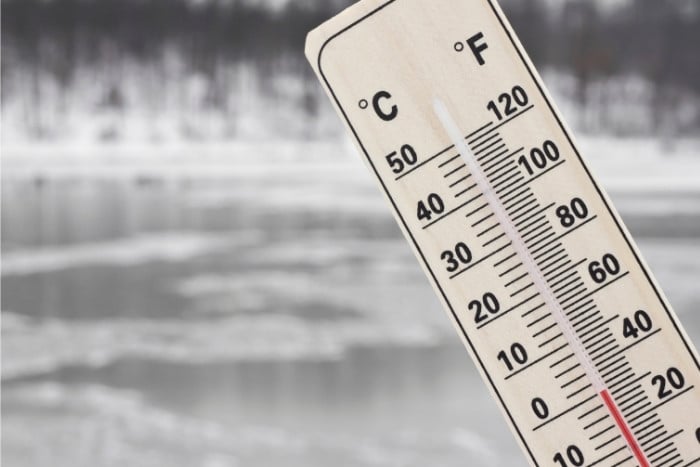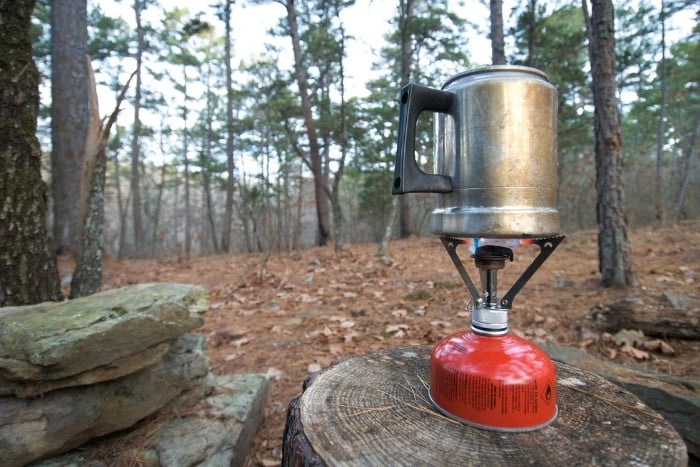Cold temperatures are starting to creep in, and you’re wondering how you can ensure you have hot meals when camping. You might be considering Jetboil as the option for a camping stove.
Jetboil manufactures efficient, ultra-lightweight gas-fueled compact stoves for backpacking that can sometimes struggle to work in winter conditions. Jetboil is easy to set up and can reach boiling temperatures in minutes. But, if you’re camping in the cold, you may want to consider alternatives.
We’ve done the digging on Jetboil to provide you with all the information you need before your winter trip. This article gives you all the information you need to decide if Jetboil is the best product for your winter expeditions.
Why Does Jetboil Struggle to Heat in Winter?
Jetboils are worthwhile investments, BUT…
There are several reasons that a Jetboil can struggle in winter. Before purchasing one, it’s helpful to know what your Jetboil can do in cold temperatures.
No one likes a surprise when you’re in the middle of a winter camping trip!
1. Cold weather
A chain reaction when using Jetboil in cold conditions is that when the fuel is cold, it lowers the vapor pressure, reducing the burner output.
As a result, the depressurization of the fuel canister can mean it struggles to light, heat, or work at all! Usually, a Jetboil is best in temperatures above 45 degrees Fahrenheit.

2. Can be difficult to light
The difficulty with working a Jetboil in winter is that it is difficult to light. The built-in piezoelectric igniter is a helpful addition to Jetboils (as you won’t be fiddling with matches).
However, if your fuel is cold, it is useless. At least a match or lighter would generate some heat which could aid in heating your canister, and this ignitor is purely for sparks.
3. Takes longer to heat
Jetboil can take longer to heat or boil what is on your stove. Consequently, it uses more fuel to get up to the temperature you need.
This can be a drawback, especially if you’re backpacking and need to get your bag as light as possible. If you’re doubling how much fuel you’ll use, it’s not the most efficient product for winter backpacking.
How Can Jetboil Work More Efficiently in Winter?
So, we’ve established that Jetboils can struggle in the winter, whether it’s their effectiveness to light or their ability to heat. All is not lost! There are a few ways a Jetboil can be adapted to work better in winter.
1. Use a mixed fuel canister
Fuel canisters contain different gasses, which can work efficiently at lower temperatures. Propane fuel works most effectively in high altitudes.
However, it is usually in heavy metal bottles which are not conducive for backpacking. You can get isobutane and propane mix canisters, improving Jetboil’s performance in cold temperatures.
When purchasing a mixed fuel canister, ask for a professional opinion, as these canisters may not be worth the weight.
2. Thermo regulator
Jetboil offers several stoves that have an advanced Thermo Regulator.
These stoves have been developed to work efficiently in colder temperatures, consistently giving out heat in temperatures down to 20° F (-6° C).
The MiniMo, Sumo, and Joule cooking systems are a few Jetboil models with this feature.
3. Create a shelter around the Jetboil
Another great way to improve Jetboils’ performance in winter is to create a shelter or windscreen when you’re cooking.
Trapping the heat around the stove can increase its effectiveness and make the fuel last longer. However, please be aware of the risks of using a windscreen.
You must always ensure ventilation, as trapping the heat and gas can be extremely dangerous.
4. Warm up the canister before use
Warming up your fuel canister before use is a great way to improve the efficiency of a Jetboil stove. If the canister is warm, it will light easily.
You can warm the canister by popping it under your armpit for 10-15 minutes or by putting it into the side of your sleeping bag before you nod off.
That way, you can ensure you always have a warm cup of tea when you wake up, just make sure you use the canister immediately.
What Jetboil Alternatives Can You Consider For Winter Camping?
If you’re feeling unconvinced by the Jetboil, there are other alternatives you can consider. Below we give you an introduction to other stoves that can be used on winter camping trips.
1. Liquid Fuel Stove
Liquid fuel stoves are a great alternative to Jetboil. Instead of relying on the pressure inside the canister to heat your stove, a liquid fuel stove allows you to pressurize it yourself with a pump.
This gives you consistent heat output no matter the temperature outside. This also means avoiding sleeping with a fuel canister through your winter campout.

2. Wood-Burning Stoves
Wood-burning stoves are another great alternative to Jetboil. Wood burning stoves remove the problem of working with gas at different altitudes. Instead, they can work effectively at any temperature.
They also remove the need to carry fuel in your bag, which makes them great for backpacking. The only drawback, the wood used in these stoves must be dry.
This may be difficult to find if you’re camping in snow or wet conditions.
3. Alcohol Stove
There is a lot of debate about how effective alcohol stoves are. We are breaking this myth by letting you know that if the alcohol is warm, the stove can work at any temperature.
The alcohol needed for these stoves is easy to source and can be kept in an inner pocket of a coat to warm up.
Alcohol stoves give heat out consistently once lit, unlike a Jetboil, where you are likely to run through fuel quickly as it takes longer to heat.
4. Esbit Tablet Stove
Esbit tablets are smokeless solid fuel tablets. One tablet will boil 500ml of water in 8 minutes, and a tablet lasts 12 minutes.
They are not impacted by altitude or extreme cold and are a good alternative to a Jetboil stove. They are also lightweight, and the stove structure is light and compact.
Due to the tablets only lasting a short time, this stove is perfect for solo campers or duos.
Final Thoughts
We hope this article has given you enough information about using a Jetboil in winter. If you are camping in temperatures above 45 degrees Fahrenheit, then the Jetboil is a solid piece of equipment.
If you decide to use it in colder conditions, you may want to consider how these temperatures could impact your Jetboil. Don’t worry, though.
We haven’t left you hanging as there are several ways you can improve Jetboils’ performance! If this is too much effort, we’ve also given you a selection of alternative stoves to use in winter!
